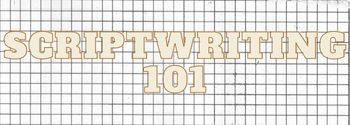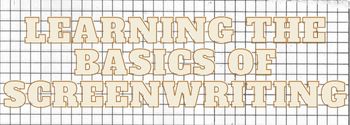Over the years, civil war has inspired man to create technology that will allow him to defeat his enemies. The first Civil War was in America. Civil war was America’s main cause for death between 1861-1865. Most of this was due to the advent of modern weapons. The civil war was not only deadly and a death trap, but it also brought about technological advancements and improved weapon design. The weapon had a profound impact on the fighting style of both confederates and union soldiers. There were many technological advances during the civil war. These included the musket and telegram, submarine, railroad and camera. Ironclad and different types of rifles were also used.
The Civil War’s most notable mechanical invention was the repeating rifle. In the Civil War, many rifles were used by the fighters. The repeater was the final weapon they chose. Both the smooth bore and the musket were used in the first stages of war. Smoothbore muskets were limited in range and accuracy. It was slow to load. The rifle could only be used by a Calvary soldier who was trained to fire the gun and then reload it in a matter of minutes. Smooth-bore black-powder guns can take in round formed bullets of approximately the same diameter as the barrel. This makes it less accurate. Rifling or rifled shotgun was the next most accurate option, at approximately 550 yards. While the barrel design of rifled musket is similar to a smoothly bored gun’s, it was quite different. The barrels of rifled guns had a groove in them that caused the bullets to turn and causing severe damage to the enemies. This was a time when there were high numbers of soldiers amputated by the rifled gun. The Rifled musket’s most popular bullet was a cone-shaped bullet. It was supplied with more than 400,000 grooved firearms. One round could be fired at a time with these Rifled black powdered Rifled.
American gunsmith Benjamin Tyler Henry invented the Henry refiles repeating rifle, which increased the shot quantity from one to twelve with one load. This rifle was an advantage for the Union army. However, it was slow to load.
The Spencer rifle, which was developed from the Henry Rifle and invented by Christopher Spencer, came later. The Union army was blessed with the Spencer rifle, while the Confederate were cursed by it. Union Soldier said that Spencer rifle was a blessing to the Union army and a curse to the Confederate. The only problem was the rifle’s capacity. This rifle had less power than the henrys. The Henry rifle was the preferred weapon of choice for the Union soldier during the four-year war because it had a greater bullet capacity. The Spencer rifle was adopted as a different weapon form. This allowed soldiers to move faster during forward movements and caused great damage to confederates.
Gatlin machine gun was the father of modern machine Gun. It had six barrels and could fire 200 rounds in 60 seconds. It was multi-barrel and hand-driven machine Gun. The first gun was built in 1882. It was equipped with a caps-percussion and steel chambers that were easy to reload. But it was prone to malfunction later on in 1867.
The Civil War saw the birth of the first hot-air balloon. A hot air balloon was a great tool for improving the Union army’s battle plans. Professor Lowe showed President Abraham Lincoln how the balloon could be used. The hot balloon rose to 500m above Washington Mall where it is now the National Air and Space. Lowe was later named commander of the newly established Balloon Corp. Lowe also received funds in 1861 to build the first Hot Air Balloon.
Lowe was the first to recommend the use of a balloon for aerial surveys for the Union Army. The Union army was able monitor the movement and send messages to Balloon Corp via the telegram. The Union army was able to fire accurately at Confederate troops thanks to this aerial view.
The Telegram was another great technological advancement for the Union Army. The army was very pleased with the telegram. Samuel Morse was the inventor of the Telegram, which transmits messages via a wire using an electrical signal. First message was sent by Washington to Baltimore. The telegram lines were most popular along the east coast. The telegram was used to communicate battle strategy with its camps during World War II. The telegram also allowed the Union Army and the Air Force Department Balloon Corp to communicate. Abraham Lincoln was the first president to use the Telegram to communicate directly with front-line officers. Andrew Carnegie established the first Military Telegram Corp in 1861. Telegrams were also used by the media to receive information from the army regarding the war’s status. The Union Army was able to use the telegram to gain an important advantage over other confederates. One of the most famous telegrams was from telegram sent by Lieutenant General Grant to General H. Thomas, which relieved him from his duties on December 9, 1984.
During civil war, naval warfare was a key issue. Union Army had ironclad battleships, while the confederate had submarines. The Union army was stronger in naval strength than the confederate with its Ironclad warships. This was due to their armor cladding, which allowed them to stay afloat while moving forward in the enemy fronts. The ironclad had one primary purpose: to keep confederates boats out of their ports. Confederates designed the submarines in an attempt to counter this. William Cheeney, Horace Hunley, and one other, were responsible for the submarine. While they made several subs in the conflict, the CSS.H. was the favorite. Hunley. In 1864, Lieutenant George Dixon and his crew set out on a mission with the Ironclad warship USS Housatonic to destroy it. The USS Housatonic was sunk by the submarine’s coal torpedo. Hunley became a submarine that destroyed a warship. It is believed that it was due to the blast from a coal torpedo, even though the submarine lost its battle and all aboard were killed. Crew members were killed in the explosion of the fired torpedo. Capitol Park Museum, Civil War Era Submarine has the parts of this submarine.
A torpedo, during civil war, was any device that could detonate even a hand grenade. The coal Torpedo is a hollow-filled, coal-covered hot iron torpedo. Thomas Courtenay (Captain in Confederate Army, Department of the Secret Service) was the inventor and designer of the coal Torpedo. It is designed to be placed inside an enemy ship/train coal pile. When the boiler is turned on, it explodes and destroys enemy compartments. Rat bombs were developed from the coal-torpedo. Union Army ships are severely damaged by these rat’s-bombs.
Photographers of great stature were able to capture the civil conflict thanks to technological advances in photography. The camera was invented to let the public see through its lens the glory and horror of war. The camera was not used for military purposes at the time. Mathew Brady was a famous photographer during the civil war. He also photographed Alexander Gardner (with Timothy O’Sullivan). Mathew used Timothy and Gardner as assistants to take photographs. The equipment was heavy. The chemicals used to create the photographs were hazardous and needed to be handled with care. However, they were unable take photos of the actual field action. Example of the image is the image of the damages of Fort Steven by Cannons[footnoteRef:6]. Images were taken of dead bodies as well as the location where the war occurred. Stereo views and wet-plate photography were two common types of photography. Stereo view photography was the most popular method of photography. It used a mechanic to create three-dimensional images. The camera was able to capture the events and lives of civil-war soldiers and could be saved as a record so that future generations can understand their history. The majority of frames were images of soldiers returning to war. Next war photographer was inspired to go on the battlefield, especially during the Vietnam War and world wars two and three.
The railroad that linked the North and the South was huge during World War II. But the vast majority of it was on North. The track ran 9,000 miles in the south, and 22,000 miles in the north. This gave advantage to the Union Army. They used it to move troops and goods around the country. The tracks on both sides were superior to those of the South. The track in the North was standard gauge which means that trains can use any track. But the track in the south was not standardized. Every point had to be changed by train cars, making it inefficient and costly.
Jonathan Letterman was the first to organize a medical transport system. It included a soldier who was not eligible to be combat soldiers. It had a stretcher, two pall carries, and a driver. They would take wounded soldiers to the medical center and go into war zones. This idea was used by Jonathan until today.
It was the best shot gun-pistol revolver. LeMat revolver’s weight was another disadvantage. Soldiers prefer the lighter Colt 1860 revolver, which was lighter than Le Mat. The colt1860 revolver had six rounds in single action and a barrel that measured eight inches long. It was used by most navy stations in Minnesota.
Finally, the Bayonet. The bayonet was used in conjunction with the Musket. When soldiers ran out of bullets, they were able to compact their hand.
This weapon was the foundation of all the weapons that are currently available. Over time, the military has added technology to its arsenal and become more stealthy and deadly.
Bibliography
Flyn Patrick and Silver Jonathan. Productions Ltd.: Guns in America. PBS Distribution.Saybrook.2013.https://www.loc.gov/search?new=true&q=https%3A%2F%2Flccn.loc.gov%2F2015601835%2F
Hubbard Lucius F. & Minnesota Historical Society. Documents related to the Civil War. St Paul (Minn.): Published by society, 1908. Pdf. https://www.loc.gov/item/18018920/
John, Tagiuri. The Library of Congress. Accessed March 28, 2019. https://www.loc.gov/item/la0699/.
Perry, George T.. Lincoln. Abraham. Lee. Robert E.. Brewerton. George Douglas. Elliott. Moore. Henry P. Gutekunst. Frederick. Nicolay. John G. Phillips. Eugenia Leviy. Magnus. Charles. Exhibitions – Library of Congress. On the twelfth of November in 2012. Accessed March 28, 2019. https://www.loc.gov/exhibits/civil-war-in-america/april-1861-april-1862.html.
Staff, I. C. E. ‘weapon law: Firearms.’ (1996).
The Library of Congress. Accessed March 28, 2019. https://www.loc.gov/item/2004667323/.
Yomtov, Nelson. “Civil War Weapons.” Search in a Library With WorldCat. On the twenty-sixth of January, two thousand and nineteen. Accessed March 28, 2019. https://www.worldcat.org/title/civil-war-weapons/oclc/944087356/.

